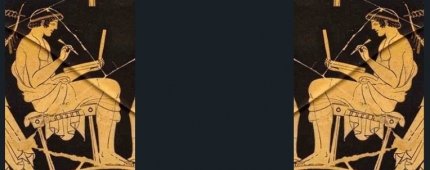Can We Still Trust Critical Evangelical Scholars?
Inerrancy Under Fire
By F. David Farnell, PhD
Senior Professor of New Testament
The Master’s Seminary
INTRODUCTION: A CALL TO ALARM
Recently, the writer of this article was involved in the co-editing and writing of a book called, The Jesus Quest: The Danger From Within (Xulon, 2014).1 This work catalogues the dangerous, alarming drift away from inerrancy historically held by the orthodox Christian church from its nascent beginnings that has been occurring among evangelicals, especially among many in a group that often identifies itself as critical evangelical scholarship. The reader is encouraged to read this work as a follow up to this article. The book reveals that a horrific, as well as historic, event is now occurring among evangelicals regarding inerrancy. John MacArthur, noting the hour of the time that evangelicals now face in regard to belief in the integrity of God’s Word, wrote the following regarding the work:
“The hard-fought victory of ICBI proved to be short-lived and of precious little lasting consequence . . . Now a new surge of old-style academic skepticism is rolling in again . . . The men who have written the essays in this volume see the heaving swells on the horizon and are braced for the onslaught . . . My hope is that these essays will help rally a new generation of young evangelicals to stand together in a sober-minded, steadfast, earnest defense of biblical inerrancy and true biblical scholarship . . . Tolle lege.”2
Please note that Dr. MacArthur realized through reading this work and others like it3 that: (1) this serious danger now confronts evangelicalism; (2) the ICBI documents are now being dismissed or disregarded by elements within evangelicalism; and (3) a clarion call for evangelicals to come together in support of the trustworthiness of Scripture needed to sound forth.
Dr. Albert Mohler related in his foreword to The Jesus Crisis:
The inerrancy of Scripture has not been universally accepted by all who would call themselves evangelical and who would function within the evangelical movement. In fact, the doctrine has seen many challenges in recent years. Embodied in the “quest for the historical Jesus” movement, a skepticism has returned that attempts to redefine and rethink Jesus in a way that denies the biblical record by placing primary importance upon extrabiblical documents and legends. Most recently, some have warned that an affirmation of Scripture’s inerrancy would lead to intellectual disaster for the evangelical movement. Still others complain that the concept is bothersome at best and inherently divisive at worst.
If we do not confess that the whole Bible is totally true and trustworthy, then we have set ourselves upon a project of determining which texts of the Bible reflect God’s perfection, if any. We will use human criteria of judgment to decide which texts bear divine authority and which texts can be trusted. We will decide, one way or another, which texts we believe to be God speaking to us.4
Mohler correctly notes that many of today’s critical evangelical scholars, have now decided to pick and choose what texts they arbitraily deem trustworthy and those which they do not. Today, more than ever before, evangelicals face a crisis being directed at orthodox concepts of inerrancy as has never before been experienced within evangelicalism. That a crisis is now brewing among evangelicals which threatens the very foundations of belief in the inspiration and inerrancy of God’s Word is no exaggeration.5
HISTORY DEJA VU
Almost 100 years ago to the very year (1915), Lyman Stewart and his brother Milton were instrumental in funding some 90 essays published from 1910 to 1915 by the Bible Institute of Los Angeles. The Fundamentals were originally edited by A. C. Dixon and later by Reuben Archer Torrey. Originally published as a twelve-volume set, The Fundamentals were later condensed to a four-volume set, but retained all 90 essays in their original form. The essays were written by 64 different authors, representing most of the major Christian denominations. These essays were designed to affirm, among other things, conservative Protestant beliefs, especially those of the Reformed tradition, and to defend against ideas deemed inimical to them. They are widely considered to be the foundation of modern Christian fundamentalism. The essays were to set out what the writers believed to be the fundamentals of the Christian faith. These were sent free to ministers, missionaries, Sunday School superintendents and others active in ministry throughout the world. The volumes defended orthodox Protestant beliefs and attacked higher criticism (known today as “historical criticism”).
For a while, the tide was stemmed against the onslaught directed at God’s Word. Soon however, evangelical drift began again with some calling for education of Bible believing students in Ivy League and European schools to gain prestige for the institutions that taught the Bible.6 The result was disastrous for inspiration and inerrancy among such schools. The warning of J. Gresham Machen in 1936, who fought the first battle in the 20th century, was disregarded by evangelicals as unnecessary although it had struck deep at the heart of Bible-believing scholars everywhere before: “[M]any seminaries today are nurseries of unbelief; and because they are nurseries of unbelief the churches that they serve have become unbelieving churches too. As go the theological seminaries, so goes the church.”7
As a result of careless or inadvertent evangelical drift from Machen’s warnings, more than thirty-five years ago the drift away from inerrancy and inspiration of God’s Word began again. Harold Lindsell’s works, The Battle for the Bible (1976) and The Bible in the Balance (1979) had just previously been written that catalogued the dangerous drift from inerrancy among Lutherans, Southern Baptists, Fuller Theological Seminary, as well as many parachurch organizations. Lindsell wrote in “How Infection Spreads,” that “History affords us notable examples of institutions and denominations that have gone astray. At times it is not easy to perceive how this happened. The trend away from orthodoxy may be slow in movement, gradual in scope, and almost invisible to the naked eye. When people awaken to what has happened, it is too late . . . Theological aberration, like cancer, begins as a small and seemingly insignificant blemish, but when it is left to itself it grows and spreads.”8
Why did Lindsell write these two books? Because he saw what happened especially to Fuller Theological Seminary in its drift away from a commitment to inerrancy of the Bible. Jack B. Rogers and Donald K. McKim had also started a firestorm at Fuller Seminary at the same time with their book, The Authority and Interpretation of the Bible which contained their dismissal of the full inerrancy and authority of God’s Word by asserting, “In this century both fundamentalism and modernism sometimes take extreme positions regarding the Bible” and “God has accommodated his ways and thoughts to our limited, human ways of thinking and speaking” so that “statements in the Bible” cannot be treated “quite literally according to contemporary standards” and “to erect a standard of modern technical precision in language as a hallmark of biblical authority was totally foreign to the foundation shared by the early chuch.”9 With one broad brushstroke, the entire plain normal sense of Scripture was flippantly tossed away again by many evangelicals who listened and were therefore convinced by the Rogers and McKim proposal.10
Because of threatening winds blowing in the direction of a full-scale denial of inerrancy, faithful evangelicalism gathered together because of a threat from outside regarding God’s Word and formulated the International Council on Biblical Inerrancy (1978) and Hermeneutics (1982). These two documents were historic in that they defended the grammatico-historical sense of the Scripture, its plain, normal sense and declared that inerrancy was a “watershed” that cannot be surrendered.
LESSONS FORGOTTEN AGAIN . . . AND AGAIN . . . AND AGAIN
Unfortunately, in the interim from ICBI to today, evangelicals have forgotten these warnings and lessons. Dangerous troubling signs now appear again since the ICBI documents were expressed. Several events in Scripture are now disregarded as non-historic or immaterial to evangelical belief. For evidence and proof of this alarming state, the reader is asked to read The Jesus Crisis,11 The Jesus Quest: The Danger from Within, and Defending Inerrancy, all of which provide substantiation for the following list of events or items in the Gospels or other places in the New Testament that are dismissed by many critical evangelical scholars as either unhistorical, symbolic, or untrue.
What are a large host of critically-trained evangelical scholars saying about Holy Scripture? The following Gospel events did not happen, or not at least in the way in which the Gospels recorded them. These are just a few examples of many, but will serve the purpose of this article:
1. The Sermon on the Mount was not preached by Jesus as is recorded in Matthew. It is perhaps a collection of Jesus’ sayings placed into the genre of a sermon on a mountain by the writer of Matthew (see below). Jesus did not say all of the beatitudes in Matthew 5:3–12. He may have said three or four of the eight or nine total.
2. The Commissioning of the Twelve in Matthew 10 is a group of instructions compiled on different occasions and organized by the author of Matthew. It was not spoken of by Jesus on a single occasion as presented.
3. The parables of Matthew 13 and Mark 4 are collections (i.e., anthologies) that Jesus uttered on different occasions rather than on a single occasion as the author of Matthew presented.
4. The Olivet Discourse in Matthew 24 did not happen in its entirety as is presented in Matthew. The writers artificially created this sermon and changed elements of it.
5. The negative portrayal of the Pharisees in the Gospels is not accurate. They were in reality decent people whom Matthew (or the other Gospel writers) portrayed in a negative light because of bias against them.
6. The genealogies of Matthew and Luke are not accurate records.
7. The visit of the Magi is fictional and the Magi are not real characters.
8. Jesus did not say the Great Commission as is recorded in Matthew 28.12
9. “Clearly, Matthew treats us to history mixed with elements that cannot be called historical in a modern sense. All history writing entails more or less editing of materials. But Matthew’s editing often goes beyond acceptable bounds . . . Matthew’s subtractions, additions, and revisions of order and phraseology often show changes in substance; i.e., they represent developments of the dominical tradition that result in different meanings and departures from the actuality of events” (p. 623). 13
10. “Comparison with the other gospels, especially with Mark and Luke, and examination of Matthew’s style and theology show that he materially altered and embellished historical traditions and that he did so deliberately and often” (p. 639).
11. “We have also seen that at numerous points these features exhibit such a high degree of editorial liberty that the adjectives ‘midrashic’ and ‘haggadic’ become appropriate” (p. 628). Midrash means it did not happen in history as it was presented in the Gospels.
12. “We are not dealing with a few scattered difficulties. We are dealing with a vast network of tendentious changes” (p. 625). This means it did not happen in history as it was presented in the Gospels.
13. “Hence, ‘Jesus said’ or ‘Jesus did’ need not always mean that in history Jesus said or did what follows, but sometimes may mean that in the account at least partly constructed by Matthew himself Jesus said or did what follows” (p. 630). This means it did not happen in history as it was presented in the Gospels.
14. “Semantics aside, it is enough to note that the liberty Matthew takes with his sources is often comparable with the liberty taken with the OT in Jubilees, the Genesis Apocryphon, the Targums, and the Midrashim and Haggadoth in rabbinic literature” (p. 628). This means it did not happen in history as it was presented in the Gospels.
15. “These patterns attain greatest visibility in, but are by no means limited to, a number of outright discrepancies with the other synoptics. At least they are discrepancies so long as we presume biblical writers were always intending to write history when they used the narrative mode”
16. “Matthew selects them [the Magi] as his substitute for the shepherds in order to lead up to the star, which replaces the angel and heavenly host in the tradition” (p. 27). The Magi, the star and the heavenly hosts did not happen as is presented in the Gospels.
17. “That Herod’s statement consists almost entirely of Mattheanisms supports our understanding Matthew himself to be forming this episode out of the shepherd’s visit, with use of collateral materials. The description of the star derives from v. 2. The shepherds’ coming at night lies behind the starry journey of the magi” (p. 31).
18. “He [Matthew] changes the sacrificial slaying of ‘a pair of turtledoves or two young pigeons,’ which took place at the presentation of the baby Jesus in the Temple (Luke 2:24; cf. Lev 12:6–8), into Herod’s slaughtering the babies in Bethlehem (cf. As. Mos. 6:2–6” (pp. 34, 35). This means these did not happen in history as it was presented in the Gospels.
19. Jesus’ command to Peter of the coin in the fish’s mouth is not historical, it did not happen (Matt. 17:24–27).14 Craig Blomberg asserts in reference to the story of the coin in the fish’s mouth in Matthew 17:24–27, “It is often not noticed that the so-called miracle of the fish with the coin in its mouth (Matt 17:27) is not even a narrative; it is merely a command from Jesus to go to the lake and catch such a fish. We don’t even know if Peter obeyed the command. Here is a good reminder to pay careful attention to the literary form.”15
20. The Resurrection of Saints in Matthew 27:51–53 did not happen. It is just special effects.
21. Jesus’ resurrection “probably” happened is the best we can say about this event historically.
22. The Gospels only give us the “footprints” of Jesus or the “surviving traces.”
23. The Jesus of the Bible and the Jesus of history are not necessarily the same. This category is fully legitimate for evangelicals to assert.
24. We must search for the historical Jesus to find out how Jesus was actually in history and what he really said and did.
25. All history is interpretation. The Gospels are historical interpretations. The Gospels contain surviving traces of Jesus’ life but they have been placed into historical narratives that have been interpreted according to the writers’ perspectives. In order to discover the “surviving traces” of Jesus’ life, we must apply criteria of authenticity based in critical methods to determine if the events actually happened as they are portrayed.
26. A scale of probability, possibility or not historically verifiable must be used.
27. Very few events in the Gospels are capable of “probability” assessment since the gospel writers placed their own interpretation on it.16
Importantly, Craig Blomberg defended Robert Gundry’s midrashic approach to the Gospels cited above in the following terms:
Is it possible, even inherently probable, that the NT writers at least in part never intended to have their miracle stories taken as historical or factual and that their original audiences probably recognized this? If this sounds like the identical reasoning that enabled Robert Gundry to adopt his midrashic interpretation of Matthew while still affirming inerrancy, that is because it is the same. The problem will not disappear simply because one author [Gundry] is dealt with ad hominem . . . how should evangelicals react? Dismissing the sociological view on the grounds that the NT miracles present themselves as historical gets us nowhere. So do almost all the other miracle stories of antiquity. Are we to believe them all?17
To Blomberg, pseudepigraphy is fully consistent with ideas of inerrancy.
Michael Licona, in his work The Resurrection of Jesus: A New Historiographical Approach,18 used bios as a means of de-historicizing parts of the Gospel (i.e. the resurrection of the saints after Jesus crucifixion in Matthew 27:51–53 is non-literal genre or apocalyptic rather than an actual historical event).19 Licona argued “Bioi offered the ancient biographer great flexibility for rearranging material and inventing speeches . . . and they often included legend. Because bios was a flexible genre, it is often difficult to determine where history ends and legend begins.”20Licona labels it a “strange little text”21 and terms it “special effects” that have no historical basis.22 His apparent concern also rests with only Matthew as mentioning the event. He concludes that “It seems best to regard this difficult text in Matthew a poetic device added to communicate that the Son of God had died and that impending judgment awaited Israel.”23
Pseudepigraphical Origin of New Testament Books Now Advocated
Many evangelical critical scholars now contend that the following books of the New Testament were not written by the New Testament Writers whose names are attached to them. We supposedly do not necessarily know who wrote them. However, please note whom these books say wrote them, e.g., 1 Corinthians16:21; Galatians 6:11; Colossians 4:18; 2 Thessalonians 2:3:17; and Philemon 19. The following result happens regarding evangelical authorship of NT books in light of such thinking. Donald Hagner indeed argues that “[w]e have very little to loose in allowing the category of Deutero-Pauline letters. If it happens that some other persons have written these four, or even six, documents in the name of Paul, we are not talking about forgery or deception.”24 Again, Hagner asserts, “[t]he ancient world on the whole did not have the same kind of sensitivity to pseudenymity that is typical of the modern world” and he prefers the term “allonymity” in deference to his teacher, I. Howard Marshall, who adopted the term.25
Book |
Authorship—Evangelical Position of Many |
| Matthew | Unknown Evangelist |
| Mark | Unknown Evangelist. Mark was the first Gospel even if church history never once stated so. The early church always said Matthew was first Gospel. |
| Luke | Unknown Evangelist |
| John | Unknown Evangelist—probably an unknown school wrote it |
| Acts | Unknown Evangelist. The “we” sections of Acts are a literary device. |
| Romans | Paul |
| 1–2 Corinthians | Paul |
| Galatians | Paul |
| Ephesians | Pseudepigrapher wrote in Paul’s name |
| Colossians | Pseudepigrapher wrote in Paul’s name |
| Ephesians | Pseudepigrapher wrote in Paul’s name |
| Philippians | Paul |
| 2 Thessalonians | Pseudepigrapher wrote in Paul’s name |
| Pastoral Epistles | Pseudepigrapher wrote in Paul’s name |
| 2 Peter | Pseudepigrapher wrote in Peter’s name |
| Revelation | Some other John or unknown pseudepigrapher |
A Response to Blomberg’s Arguments
The most recent crescendo in critical evangelical scholarship’s attack on orthodox views of inerrancy comes from Craig Blomberg in his new work, Can We Still Believe the Bible?26 Baker hails the book in the following terms,
“Challenges to the reliability of Scripture are perennial and have frequently been addressed. However, some of these challenges are noticeably more common today, and the topic is currently of particular interest among evangelicals. In this volume . . . Craig Blomberg offers an accessible and nuanced argument for the Bible’s reliability in response to the extreme views about Scripture and its authority articulated by both sides of the debate. He believes that a careful analysis of the relevant evidence shows we have reason to be more confident in the Bible than ever before. As he traces his own academic and spiritual journey, Blomberg sketches out the case for confidence in the Bible in spite of various challenges to the trustworthiness of Scripture, offering a positive, informed, and defensible approach.”27
Blomberg dialogues in questions of textual criticism, canon issues, translations, inerrancy, genre interpretation, and miracles, offering various solutions to various problems that center in these topics. This book is highly commended by Scot McKnight (Northern Seminary), Darrell Bock (Dallas Theological Seminary), Paul Copan (Palm Beach Atlantic University), Craig S. Keener (Asbury Theological Seminary) and Leith Anderson (National Association of Evangelicals). On the back cover, Bock himself encourages the reader to “read and consider anew how to think about Scripture.”
Blomberg immediately tips his hand regarding the true nature of this work when the dedication page says, “To the faculty, administration, and trustees of Denver Seminary who from 1986 to the present have created as congenial a research environment as a professor could hope for, upholding the inerrancy of Scripture without any of the watchdog mentality that plagues so many evangelical institutions.”28 This statement reveals the dual nature of this work in that it not only reveals Blomberg’s unusual take on inerrancy but is intended to deride those who affirm the now classical definition of inerrancy as defined by ICBI.
He less than subtly calls “A handful of very conservative Christian leaders who have not understood the issues adequately” as having “reacted by unnecessarily rejecting new developments.”29 Blomberg’s ideology is eerily similar to Rogers’ and McKim’s position in 1979 when they wrote about the 20th century, “In this century both fundamentalism and modernism sometimes took extreme positions regarding the Bible.”30 This present reviewer had deja vu all over again when he read Blomberg at many places and recalled Rogers’ and McKim’s similar arguments to Blomberg.
In terms of Blomberg’s take on inerrancy, he derides “extremely conservative Christians” who continue to insist on following their modern understandings of what should or should not constitute errors in the Bible and censure fellow inerrantists whose views are less anachronistic.”31 Blomberg’s loophole in the question of inerrncy, however, is “genre.”32 He relates something that immediately causes the reader to take pause: “Most important, simply because a work appears in narrative form does not automatically make it historical or biographical in genre. History and biography themselves appear in many different forms, and fiction can appear identical to history in form.”33 He relates that “the way in which the ancients wrote history is clearer now than ever before. Once again the result is that we know much better what we should be meaning when we say we ‘believe the Bible,’ and therefore such belief is more defensible than ever.”34 He attacks “ultraconservatives” who do not abide by his assessment in the following terms, “once again, unfortunately, a handful of ultraconservatives criticize all such scholarship, thinking that they are doing a service to the gospel instead of the disservice that they actually render.”35
Because of limited space in a review, Chapter 4, “Don’t These Issues Rule Out Biblical Inerrancy” and Chapter 5, “Aren’t Several Narrative Genres of the Bible Unhistorical” deserve special scrutiny for any one who would affirm belief, and especially the classic definition of inerrancy, in the Bible.36 Blomberg here addresses the “fundamentalist-modernist controversy.” He claims that the idea of inerrancy as understood by American efforts is largely an American phenomena: “Other branches of evangelicalism, especially in other parts of the world not heavily influenced by American missionary efforts, tend to speak of biblical authority, inspiration, and even infallibility, but not inerrancy.”37 He relates that some have “consciously rejected inerrancy as too narrow a term to apply to Scripture.”38 He relates that these misunderstandings about inerrancy emerge especially “among those who are noticeably more conservative or those who are noticeably more liberal in their views of Scripture than mainstream evangelicalism.”39 He mentions the following who, in his belief, have misunderstood inerrancy because they are too conservative: “[F]rom the far right of the evangelical spectrum, Norman Geisler, William Roach, Robert Thomas, and David Farnell attack my writings along with similar ones by such evangelical stalwarts as Darrell Bock, D. A. Carson, and Craig Keener as too liberal, threatening inerrancy, or denying the historicity of Scripture.”40 In response to this, the writer of this review would urge readers to examine the latest book from Geisler and Farnell, The Jesus Quest: The Danger From Within, to make up their own minds as to the interpretative approaches of Blomberg and these scholars especially in terms of inerrancy. Blomberg addresses the effect of creeds and confessions of Christendom especially in terms of inerrancy.41
He relates that “[T]here are two quite different approaches [to inerrancy], moreover, that can lead to an affirmation that Scripture is without error.”42 These two approaches are first an “inductive approach” that “begins with the phenomena of the Bible itself, defines what would count as an error, analyzes Scripture carefully from beginning to end, and determines that nothing has been discovered that would qualify as errant.”43 Then there is a “deductive approach” that begins with the conviction that God is the author of Scripture, and proceeds to the premise by definition that God cannot err, and therefore concludes that God’s Word must be without error.44 He reacts negatively against the deductive approach of “evidentialists” and “presuppositonalists” by noting that these two terms “ultimately views inerrancy as a corollary of inspiration, not something to be demonstrated from the texts of Scripture itself.” If the Bible is God-breathed (2 Tim. 3:16), and God cannot err, then the Bible must be inerrant. Hence, the inductive approach to Blomberg requires that the Bible prove that it is inerrant through critical investigation of the texts themselves rather than the others that just assume the texts are inerrant. Thus, he shifts the burden of proof from the Bible itself to that of the scholar. It is the critical investigator that must establish whether the text is truly inerrant. Importantly, Blomberg believes that the real debate on inerrancy is one of “hermeneutics.”45 Thus, under this logic, one could hold to inerrancy but believe that a particular event in Scripture is really symbolic and not to be taken as literally an event in the time-space continuum (such as creation in six days). As a result, “Genesis 1 can be and has been interpreted by inerrantists as referring to a young earth, an old earth, progressive creation, theistic evolution, a literary framework for asserting God as the creator of all things irrespective of his methods, and a series of days when God took up residence in his cosmic temple for the sake of newly created humanity in his image. Once again, this is a matter for hermeneutical and exegetical debate, not one that is solved by the shibboleth of inerrancy.”46 One must note, however, that Blomberg reveals his startling differences with inerrancy as defined by ICBI in 1978: “We affirm that the text of Scripture is to be interpreted by grammatico-historical exegesis, taking account of its literary forms and devices, and that Scripture is to interpret Scripture. We deny the legitimacy of any treatment of the text or quest for sources lying behind it that leads to relativizing, dehistoricizing, or discounting its teaching, or rejecting its claims to authorship.” Here Blomberg’s position is neither grammatical, historical, or literal, for Blomberg argues, “defenders of inerrancy do not reflect often enough on what it means to say that nonhistorical genres are wholly truthful.”47 He also reflects a deja vu mantra of Rogers and McKim who wrote in 1979, “But often without realizing it, we impose on ancient documents twenty-first century standards that are equally inapproapriate.” Rogers and McKim, said “To erect a standard of modern, technical precision in language as the hallmark of biblical authority was totally foreign to the foundation shared by the early church.”48 Blomberg also supports elements of speech-act theory and also maintains that “Vanhoozer’s work is indeed very attractive, but it is scarcely at odds with the Chicago Statement.”49 The reader is referred here to Geisler and Roach’s evaluation of Vanhoozer for a different perspective, “Kevin Vanhoozer on Inerrancy,” in Inerrancy Defended.50 One wonders at this statement of Blomberg, since Vanhoozer denies the grammatico-historical approach, and as Geisler and Roach conclude, “[Vanhoozer] also claims to affirm much of the ICBI statement as he understands it. But that is precisely the problem since the way he understands it is not the way the framers meant it, as is demonstrated from the official commentaries on the ICBI statements.”
The practical result of this kind of approach is that genre can be used to deny anything in the Bible that the interpreter finds offensive when interpreted in its historical-grammatical context. The allegorical school did such a thing, the gnostics did it to Scripture as well, and now Blomberg applies his updated version of it with genre being applied to hermeneutics. Blomberg’s use of genre, to this present reviewer, smacks of an eerie similarity to Rogers and McKim’s deprecation of literal interpretation when they noted Westerner’s logic that viewed “statements in the Bible were treated like logical propositions that could be interpreted quite literally according to contemporary standards.”51 In Chapter 5, “Aren’t Several Narrative Genres of the Bible Unhistorial,” his use of hermeneutics continues to be the means by which he can redefine what normal definition of inerrancy would be, and he uses it to deny the plain, normal sense of Genesis 1–3,52 while advocating that we must understand the author’s intent in such passages, with the key question from Article 13 of ICBI, “standards of truth and error that are alien to its usage or purpose.” Applying a completely wrong understanding of this clause of ICBI as well as the original intent of the founders of ICBI, Blomberg advocates the idea that “the question is simply one about the most likely literary form of the passage.”53 From there, he proceeds to allow for non-literal interpretation of Genesis 1–3 that are, in his view, fully in line with inerrancy, e.g., Adam and Eve as symbols for every man and woman,54 evolutionary and progressive creation,55 a non-historical Jonah,56 the possibility of three Isaiah’s,57 Daniel as Apocalyptic genre rather than prophetic,58 fully embracing of midrashic interpretation of the Gospels as advocated by Robert Gundry as not impacting inerrancy,59 as well as pseudepigraphy as fully in line with inerrancy in NT epistles under the guide of a “literary device” or “acceptable form of pseudonymity.60 He argues that we don’t know the opinions of the first century church well-enough on pseudepigraphy to rule it out: “[B]arring some future discovery related to first-century opinions, we canot pontificate on what kinds of claims for authorship would or would not have been considered acceptable in Christian communities, and especially in Jewish-Christian circles when the New Testament Epistles were written. As a result, we must evaluate every proposal based on its own historical and grammatical merits, not on whether it does or does not pass some preestablished criterion of what inerrancy can accept.”61
Several summaries after reading Blomberg’s work are in order. First, under the logic of Blomberg, one would wonder if Galatians would not have been accepted by evangelical communities since in it Paul has quite a few charged statements against the Judaizers that to today’s evangelicals might seem unfair, such as, “If I or an angel from heaven preach to you a different gospel than that which you heard, let them be anathema: I am amazed that you are so quickly deserting Him who called you by the grace of Christ, for a different gospel; which is really not another; only there are some who are disturbing you and want to distort the gospel of Christ. But even if we, or an angel from heaven, should preach to you a gospel contrary to what we have preached to you, he is to be accursed! As we have said before, so I say again now, if any man is preaching to you a gospel contrary to what you received, he is to be accursed! For am I now seeking the favor of men, or of God? Or am I striving to please men? If I were still trying to please men, I would not be a bond-servant of Christ” (Gal. 1:6–10). Paul also says in Galatians 5:12 of those false teachers who advocate circumcision, “I wish that those who are troubling you would even mutilate themselves,” whereby Paul advocates that the false teachers who proclaimed works in salvation through circumcision should slip with their knife and cut off some important member. In the Philippians, Paul calls out two ladies who are bickering with each other by name, “I urge Euodia and I urge Syntyche to live in harmony in the Lord” (Phil. 4:2). In the Pastoral Epistles, Paul calls out heretics by name and delivers them over to Satan, “Among these are Hymenaeus and Alexander, whom I have handed over to Satan, so that they will be taught not to blaspheme” (1 Tim. 1:20). In 2 Timothy 4:14, “Alexander the coppersmith did me much harm; the Lord will repay him according to his deeds.” Would Paul’s warning to take every thought captive (2 Cor. 10:5) not call for rigorous examination of all evangelical positions so that we might be faithful to God’s Word (1 Cor. 4:4)? What about Jude’s warning about false teachers who “crept in unnoticed” or Peter’s language of no uncertain terms, “But false prophets also arose among the people, just as there will also be false teachers among you, who will secretly introduce destructive heresies, even denying the Master who bought them, bringing swift destruction upon themselves. Many will follow their sensuality, and because of them the way of the truth will be maligned; and in their greed they will exploit you with false words; their judgment from long ago is not idle, and their destruction is not asleep.” (2 Pet. 2:3–4)? Would critically trained evangelicals advocate such language as too harsh or too censorious? Surely Jesus’ condemnation of the Pharisees in Matthew 23 was within the bounds of evangelicalism today, one would hope at least.
Second, it is not only very poor logic but highly unprofessional to name call evangelicals who are concerned for inerrancy issues as “Nazism and Communism.”62 In light of the Scripture passages quoted above about certain NT books defending the faith, would some critically trained evangelicals call Paul’s concern for the inspiration and inerrancy of the Word in such terms?
Third, Blomberg shows a remarkable lack of understanding regarding the ICBI 1978 and 1982 statements, and, at times, clearly is in opposition to them. He clearly does not accept them as originally intended or as a guideline that he will abide by.
Fourth, the reader is urged to go to the new website created by critical evangelical scholars called, http://canwestillbelieve.com to see the critical evangelical scholars who now have come out in support of a change in ICBIs’ meaning and in the definition of the orthodox concept of inerrancy: Michael F. Bird, Darrell L. Bock, Phillip J. Long, Lee Martin McDonald, Joel L. Watts, Daniel Wallace.
AN ALARMING CONCLUSION
Perhaps a better title for this Baker book should be Can We Still Believe Evangelical Critical Scholars? Why? Those who affirm or agree with Blomberg’s logic say that they believe in inerrancy, but Blomberg’s book and other writings cited in this article leave much doubt as to whether they really do believe it the way the church has traditionally maintained that doctrine throughout the millennia. Indeed, the present review challenges all to re-read Rogers and McKim’s work (1979), as well as Rogers, Biblical Authority (1977) and Woodbridge’s answer to discover startling parallels in many thoughts between their position and that of critical evangelical scholars like Blomberg today. It is painfully obvious in this book that Paul’s warning not be taken captive by philosophy has been seemingly overlooked, ignored and disregarded by Blomberg (Col. 2:8—“See to it that no one takes you captive through philosophy and empty deception, according to the tradition of men, according to the elementary principles of the world, rather than according to Christ”) as well as Paul’s warning to take every thought captive (2 Cor. 10:5—“We are destroying speculations and every lofty thing raised up against the knowledge of God, and we are taking every thought captive to the obedience of Christ”).
1 Norman L. Geisler and F. David Farnell, The Jesus Quest: The Danger From Within (Maitland, FL: Xulon, 2014).
2 John F. MacArthur, “Foreword,” in The Jesus Quest, xv-xvii.
3 For example, Norman L. Geisler and William C. Roach, Inerrancy Defended (Grand Rapids: Baker, 2011).
4 Albert Mohler, “Foreword,” in The Jesus Quest: The Danger From Within, xviii-xix.
5 For a further explanation, read “The ‘Jesus Crisis’: What Is It?, Robert L. Thomas, in The Jesus Crisis The Inroads of Historical Criticism into Evangelical Scholarship, Eds. Robert L. Thomas and F. David Farnell (Grand Rapids: Kregel, 1998)13-34; F. David Farnell, “Part 4: Beware of ‘Critical” Post-Modern History, in The Jesus Quest The Danger From Within), 359-520.
6 See F. David Farnell, “Searching for the Historical Jesus: Does History Matter to Neo-Evangelicals,” in The Jesus Quest: The Danger From Within, 423-424.
7 J. Gresham Machen, The Christian Faith in the Modern World (Grand Rapids; Eerdmans, 1965 [1936]), 65.
8 Harold Lindsell, The Battle for the Bible (Grand Rapids: Zondervan, 1976), 185.
9 Jack B. Rogers and Donald K. McKim, The Authority and Interpretation of the Bible, An Historical Approach (New York: Harper and Row, 1979), xvii-xxiii. See also Jack Rogers, Ed. Biblical Authority (Waco, TX: Word, 1977).
10 For a devastating critique of their proposal, see John D. Woodbridge, Biblical Authority: A Critique of the Rogers/McKim Proposal (Grand Rapids: Zondervan, 1982).
11 Robert L. Thomas and F. David Farnell, eds., The Jesus Crisis: The Inroads of Historical Criticism into Evangelical Scholarship (Grand Rapids, MI: Kregel Publications, 1998).
12 The list of 1–8 are catalogued in Robert L Thomas, “The Jesus Crisis: What is it?” in The Jesus Crisis, 34.
13 The list of 9–13 as well as page numbers cited are from Robert Gundry, Matthew A Commentary on His Literary and Theological Art (Grand Rapids: Eerdmans, 1982) as well as A Commentary on His Handbook for A Mixed Church under Persecution (Grand Rapids: Eerdmans, 1994). The latter note: an updated version of the 1982 commentary.
14 This assertion is from Craig Blomberg.
15Blomberg, “A Constructive Traditional Response to New Testament Criticism,” in Do Historical Matters Matter to Faith, Eds. James K. Hoffmeier and Dennis R. Magary (Wheaton, ILL: Crossway, 2012) 354 fn. 32. Sadly, this book constitutes an outright assault on orthodox concepts of inerrancy and demonstrates that a decided drift away from orthodoxy on the part of evangelical criticial scholars is now rapidly occurring. See F. David Farnell, “Review of Do Historical Matters Matter to Faith,” The Master’s Seminary Journal (Spring 2013), 149-157.
16 Items from 16–22 are cited in The Jesus Quest: The Danger From Within, 361-520. Consult also Darrell L. Bock and Robert L. Webb, Key Events in the Life of the Historical Jesus (Tubingen: Mohr Siebeck, 2009), note especially pp. 9-94; Darrell L. Bock, Who is Jesus? Linking the Historical Jesus with the Christ of Faith (New York: Howard, 2012) where statements like these are asserted; Darrell L. Bock, “Abandon Studying the Historical Jesus? No, We Need Context, A Response to ‘The Jesus We’ll Never Know,’” posted in Christianity Today on April 9, 2010. Located at www.Christianity Today.com/ct/2010aprilweb-only/24-51.0.html. Accessed on 5/27/2013.
17 Craig L. Blomberg, “New Testament miracles and Higher Criticism: Climbing Up the Slippery Slope,” JETS 27/4 (December 1984) 436.
18Michael R. Licona, The Resurrection of Jesus, A New Historiographical Approach (Downers Grove: InterVarsity, 2010).
19 Bios is a form of Roman biography that has ad ad-mixture of historical fact and non-historical legend in its composition.
20 Ibid., 34.
21 Ibid., 548.
22 Ibid., 552.
23 Ibid., 553.
24 See Donald A. Hagner, New Testament: A Historical and Theological Introduction (Grand Rapids: Baker, 2012), 194, 236, 426–35, 563, 586, 615, 672, 689, 714, 728, 761.
25 Hagner, 428, 431.
26 Craig Blomberg, Can We Still Believe The Bible? An Evangelical Engagement with Contemporary Questions (Grand Rapids, MI: Baker Brazos Press, 2014), 287 pages.
27 http://www.amazon.com/Can-Still-Believe-Bible-Contemporary/dp/1587433214 accessed on 4/26/2014.
28 Ibid., v.
29 Ibid., 7–8.
30 Rogers and McKim, The Authority and The Interpretation of the Bible, xxiii.
31 Blomberg, Can We Still Believe The Bible, 10.
32 Ibid., 10–11.
33 Ibid., 11.
34 Ibid.
35 Ibid.
36 Blomberg, Can We Still Believe The Bible, 119–46, 147–78.
37 Ibid., 119.
38 Ibid.
39 Ibid.
40 Ibid., 120.
41 Ibid., 120–21.
42 Ibid., 121.
43 Ibid.
44 Ibid.
45 Ibid., 125.
46 Ibid., 126.
47 Ibid., 128.
48 Rogers and McKim, The Authority and Interpretation of the Bible, xxii.
49 Blomberg, Can We Still Believe The Bible, 136.
50 Geisler and Roach, Inerrancy Defended, 132–59.
51 Rogers and McKim, The Authority and Interpretation of the Bible, xviii.
52 Blomberg, Can We Still Believe The Bible, 150.
53 Ibid.
54 Ibid., 152.
55 Ibid., 151–53.
56 Ibid., 160.
57 Ibid., 162.
58 Ibid., 163–64.
59 Ibid., 165–68.
60 Ibid., 168–72.
61 Ibid., 172.
62 Ibid., 7.
Copyright © 2014 Dr. F. David Farnell – All rights reserved.














